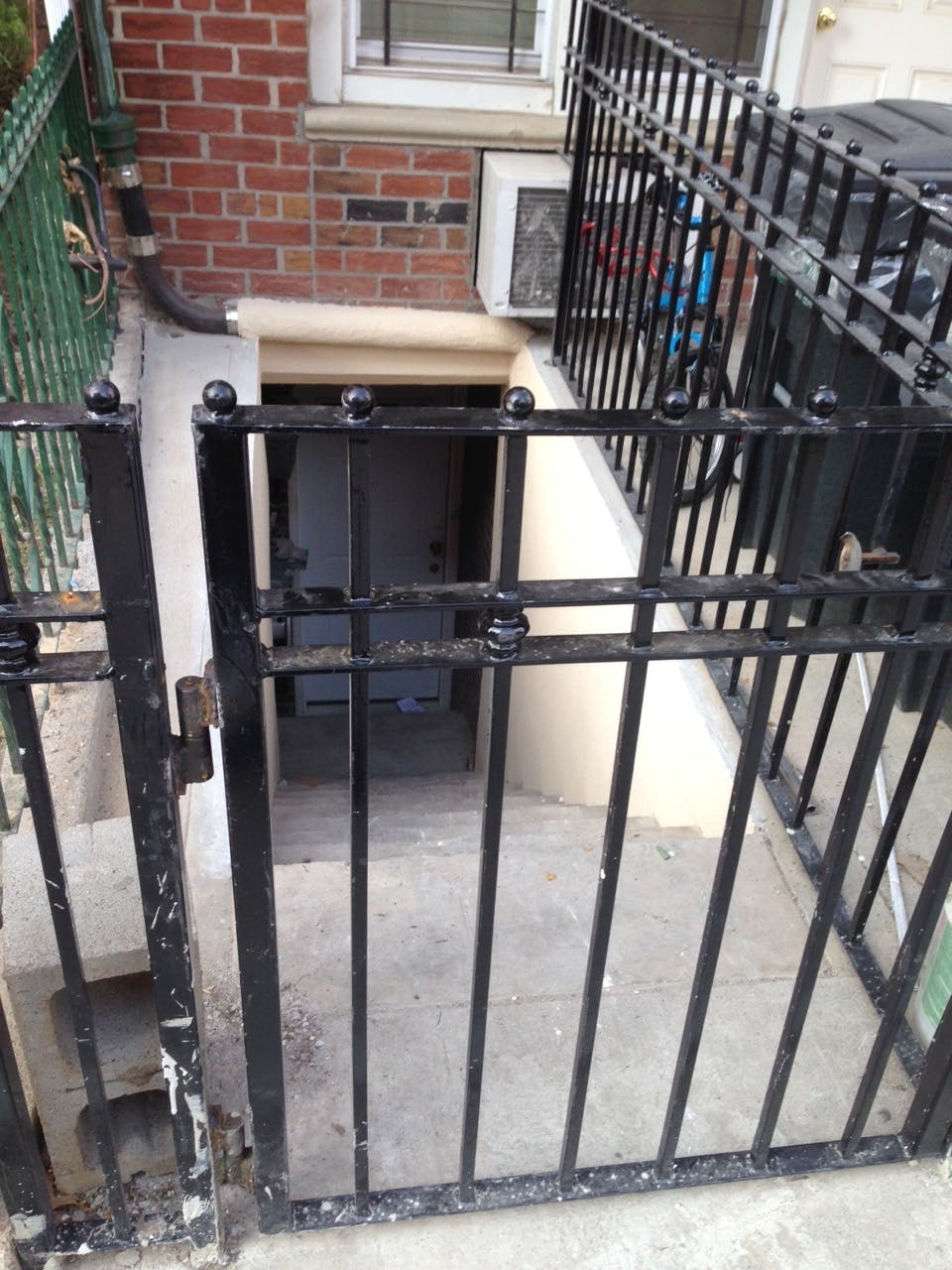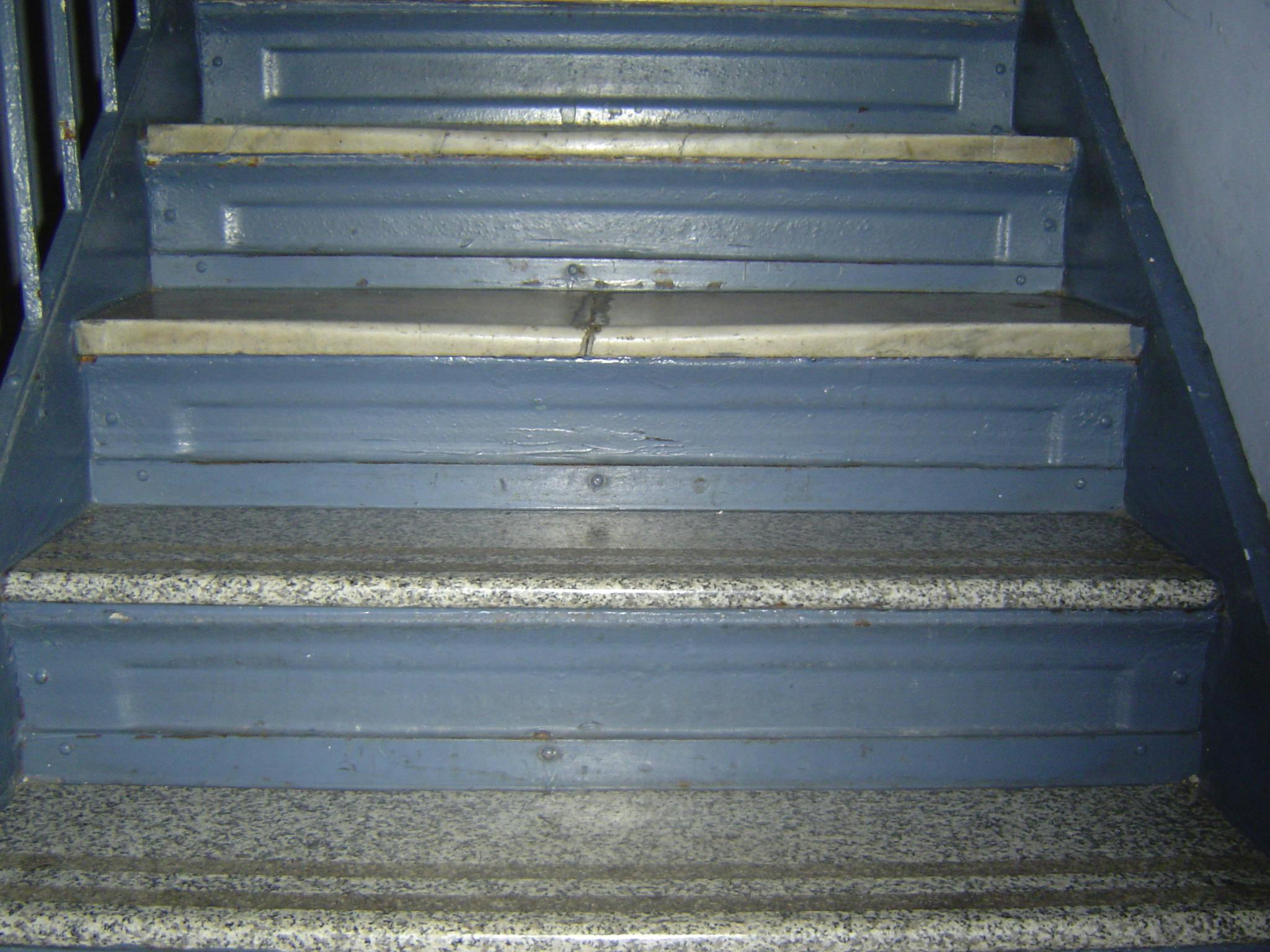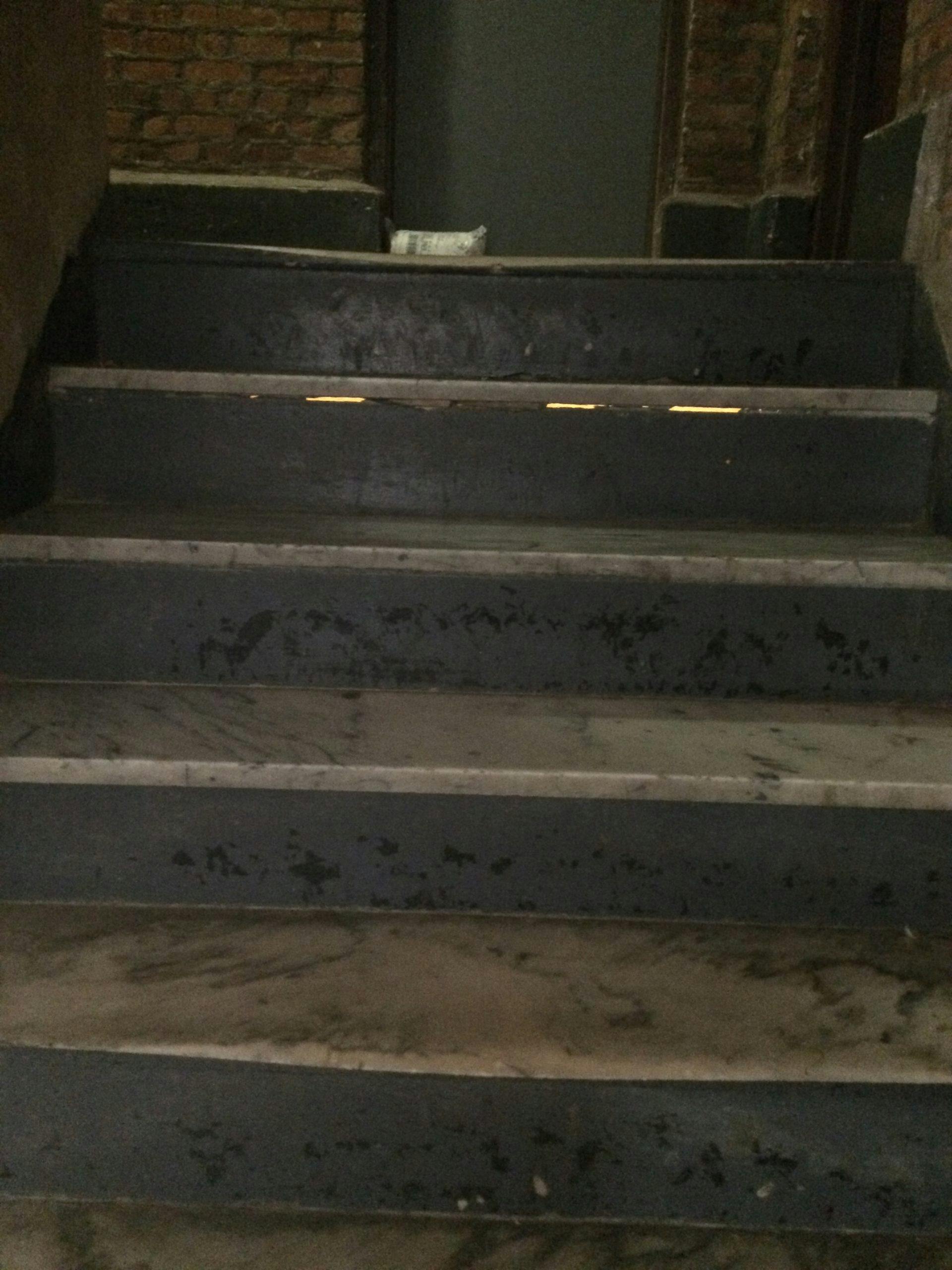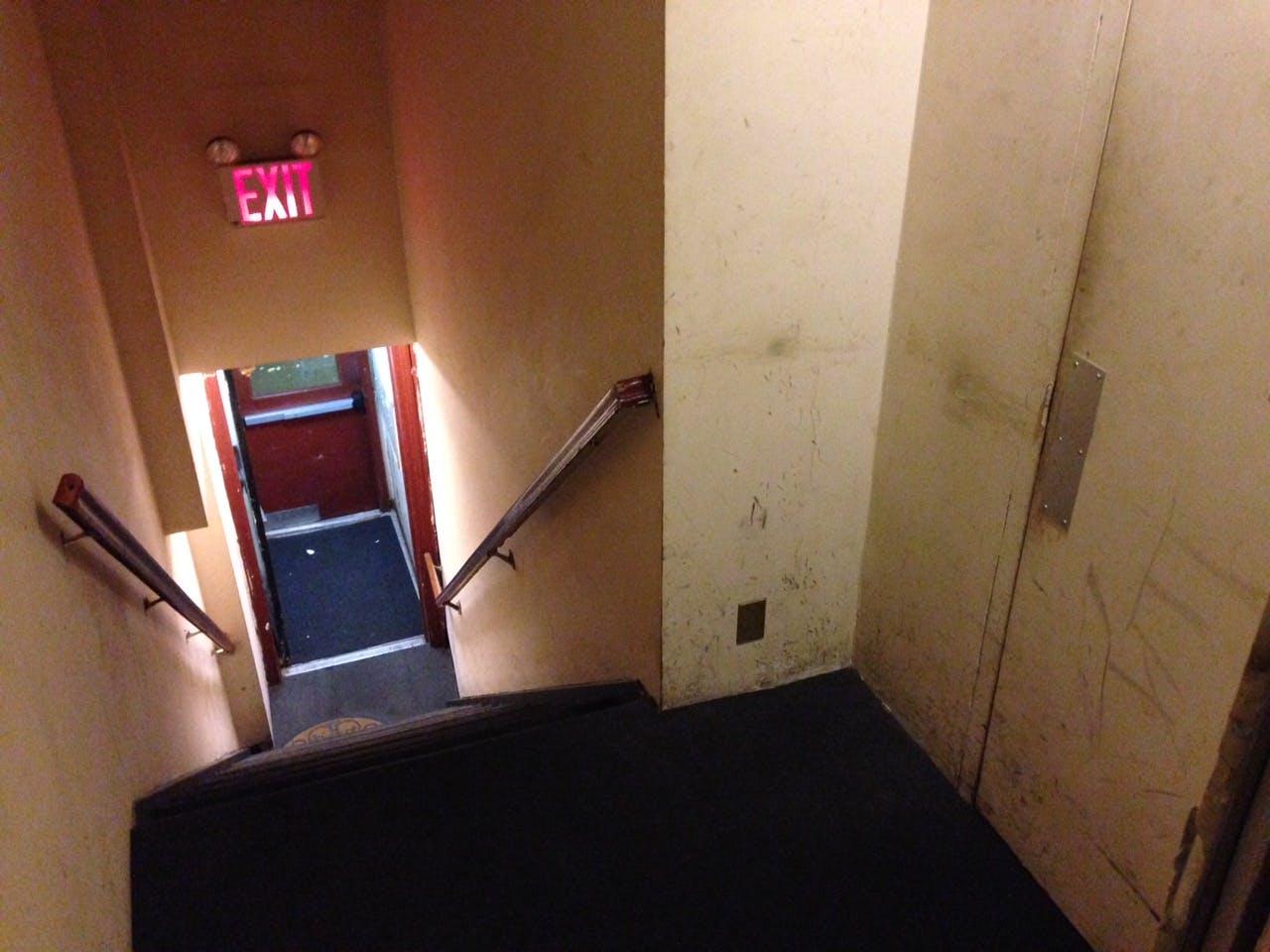NYC Stairway Accident Lawyer

Many serious injury accidents in New York City are caused by falls on stairways or staircases that are defective or improperly maintained. In NYC we all have to navigate stairs on a regular basis and those responsible for the maintenance of the stairs must do their part to make sure they are safe.
To get a good result in a stairway accident case, it is important that your lawyer has experience in this type of case and knows the law and is familiar with the New York City Building Code and New York State Multiple Dwelling law.
Inside common area stairway accidents are the most prevalent form of stairway accident in New York City.
What is required to have a successful recovery in a stairway accident case? First is a defective condition that was a cause of the accident. Second is being able to prove that the condition was either in existence to more than a reasonable period of time before the accident that the owner or managing agent should have recognized and remedied the condition or that the condition was caused and created by the defendant or their employees.
In proving the the defective condition aspect of the case, there are essentially three categories of a staircase accident: (1) accident involving broken or defective stairs; (2) accidents involving transient conditions upon the stairs; and (3) accidents caused by stairways that are not in compliance with the applicable building code.
In a staircase accident case it is helpful to become aware of the different aspects of a staircase.
- Landing: The platform area that allows for a transition from one section of steps to another.
- Treads: The horizontal portion of the step that you actually step upon
- Risers: The vertical facing of the step that runs from the back of the lower tread to the front of the upper tread.
- Nosing: The lip of the front portion of the front of the tread, which typically overhangs the riser.
- Handrail: Obviously the rail affixed to the wall or supported by the banister which runs up and down the stairs, which
may be on both sides or one side.
Broken or defective stair accidents :
 Our law firm has successfully handled many cases involving problems with the stair treads (either broken or of improper material). We have handled cases involving conditions involving risers and treads that are out of code by way of measurements and cases involving nosing that was broken or defective. We have also handled where the handrails that were not installed securely and where there have been railings not in place, but required to be in place pursuant to code.
Our law firm has successfully handled many cases involving problems with the stair treads (either broken or of improper material). We have handled cases involving conditions involving risers and treads that are out of code by way of measurements and cases involving nosing that was broken or defective. We have also handled where the handrails that were not installed securely and where there have been railings not in place, but required to be in place pursuant to code.
In cases involving a broken or defective staircase it is very important to get a qualified engineer to inspect the staircase to be able to speak to the condition and condition’s relation to the code requirements. When a serious injury occurs due to a defective stair accident, it is critical to have a law firm such as ours that will make the initial investment without hesitation early in the litigation – claim process.
Our firm has also successfully represented cases involving falls on stairways due to lack of proper lighting.
Slippery stairway accidents :

Stairs involving transient conditions upon internal or external stairs can prove to be a little more difficult to prove. Most of these cases come down to proving legal notice, which means that the person or entity responsible for the maintenance of the staircase either should have known of the condition by reason of its existence that in the exercise of ordinary care the condition should have been recognized and remedied before the accident, or being able to prove that the condition was caused and created by the defendant or their employees.
Cases of stairway accidents in this category involve sometimes garbage and/or trash bag residue left upon the stairs that make them slippery and unreasonably dangerous.
There are outside stairway accident cases that sometimes involve snow or ice conditions, and generally the prevailing common law standards on snow and ice removal will apply to the case for the purposes of determining liability.
Recent cases of interest :
Crane v. Brookdale Hospital Medical Center, 2020 NY Slip Op 33454(U)
Plaintiff fell while descending an exit staircase. The plaintiff did not see anything before her accident, but felt something catch the heel of her boot thus causing her to slip and injure her knee. The plaintiff did identify the condition on a photograph which showed that the tread was not flush and was in a buckled condition. The defendant witness when shown the same photograph also admitted that it was “a little bit out”. On the issue of notice the defendant must demonstrate the last time that the area was cleaned or inspected, before being able to claim it lacked any notice of the condition. Further, the court recognized that whether a condition is dangerous or defective is generally a question for the jury. Furthermore, in the court’s determination as to whether the condition is trivial as a matter of law, the court must examine the width, depth, elevation, irregularity and appearance of the defect. There is no “per se rule” that a condition must be of a certain height or depth to be actionable. Defendant’s motion for summary judgment was therefore denied.
Deluigi v. Town Sports International, LLC, 2020 NY Slip Op 32605(U)
Plaintiff slipped and fell on leaves on the stairs leading to the basement of the defendant’s fitness club. The defendant was able to present the last time that the staircase was checked and therefore met their prima facie burden that they did not have notice. This therefore shifts the burden to the plaintiff to prove that the leaves were on the stairs for too long before the accident that in the exercise or ordinary care they should have been recognized and removed. The plaintiff was unable to provide such proof and the case was dismissed as a matter of law by the judge.
Lopez v. 1355 Morris Ave., LLC, 2020 NY Slip Op 50905(U)
Plaintiff slipped and fell upon interior stairs within her apartment building due to mopped stairs that made them wet and slippery. The defendant claimed that the fall was caused due to a misstep that was captured on video and not a slippery condition and contrary to plaintiff’s testimony the stairs were not moped on the date of the accident. The defendant further claims that the accident was caused by the plaintiff looking at her cell phone as per plaintiff’s own testimony. Despite the evidence against the plaintiff, the court properly recognized its limited role on the motion for summary judgment being that of issue spotting and not issue resolution and therefore denied defendant’s motion as there is a question of fact as to whether the condition was created by the defendant’s superintendent.
Adzel v. Edward Builders Inc., 2020 NY Slip Op 32464(U)
Plaintiff working in security tripped and fell on the interior staircase in the building. The plaintiff testified that he did not know what caused his fall, although he remembers reaching for a handrail and there was no handrail present. Construction was ongoing in the building and the handrails may have been removed. The court held that given the plaintiff’s inability to establish the cause of the accident even though there was no handrail, his case rests upon speculation and therefore the court dismissed the case. This case stands for the clear requirement that the plaintiff must know what caused him/her to fall.
Trantham v. 12 First Avenue Restaurant Corp., 2020 NY Slip Op 32074(U)
The plaintiff as a customer of a restaurant/bar while trying to use a restroom walked to the area where he saw a sign that required him to go under an archway into what he described as a dark area and did not see the stairway due to the lack of lighting and fell. The defendant argued that the plaintiff was unable to articulate the cause of his fall in terms of any defects with respect to the staircase as supported by the defendant’s expert. The court held that the plaintiff was not required to submit expert testimony on an issue within the direct knowledge base of the jurors. The court construed a photograph that depicts a partly obscured stairway with no signage showing the presents of the stairs in a dark area. Defendant’s motion for summary judgment was denied.
Mollette v. 111 John Realty Corp. and 7-Eleven, Inc., 2020 NY Slip Op 31881(U)
Plaintiff, a fire safety inspector was inspecting refrigeration equipment in the basement of the 7-Eleven Store. He went down the set of concrete stairs with no difficulty and saw wetness-puddle on the floor and assumed it was coming from the refrigeration or air-conditioning unit as it had no odor. After working in the area he proceeded back up the same stairs and slipped and fell due to the wetness of his feet. Defendant 7-Eleven failed to meet its initial burden of establishing that it had no notice of the condition, and therefore the court denied their motion for summary judgment.
Gray v. 1320 Fulton Avenue management Corp. et al., 2020 NY Slip Op 31013(U)
Plaintiff as a resident of the defendant’s apartment building was ascending an interior staircase with his right hand on the handrail and his left hand with a gallon of milk. Plaintiff testified that the handrail was not properly secured allowing it to jerk out of place causing him to fall backward down the staircase. The plaintiff also claimed that pursuant to code there should have been another handrail on the other side. The court rejected this portion of the argument as the plaintiff already testified that he had a gallon of milk in his left hand. The defendant’s expert claimed that the stairway and handrail were in proper condition and properly mounted. Plaintiff’s offered an expert that claimed that the handrail was not properly maintained. The court determined that there is a question of fact for the jury and the defendant’s motion to dismiss was denied.
Bonilla v. Southside United Housing Development Fund Corporation, et al., 181 A.D.3d 550 (2020)
Plaintiff has slipped due to liquid on the staircase in the defendant’s building in Brooklyn. The lower court denied the defendant’s motion for summary judgment and the Second Department of the Appellate Division sustained the lower court. This case stands for the clear proposition that the defendant on a motion for summary judgment has the initial burden of establishing when they last cleaned or inspected the staircase to make an argument that they did not have any actual or constructive notice of a dangerous condition. Here the defendant failed to submit the evidence in proper form and therefore their motion was denied.
Selecting the right lawyer for a staircase accident makes a difference:

Stairway accidents can cause serious injuries. There are many causes of a stairway accident and the facts of the case must be investigated in a thorough manner with the legal requirements of a viable case in mind. The lawyer must be fully familiar with the common law principles that apply to stairway accidents, as well as the Codes and Statutory requirements such as the NYC Building Codes and New York State Multiple Dwelling laws. Some law firms try and take too many shortcuts……….
on this type of case and do not get an expert involved soon enough to be able to properly prove a case.
If you or someone you care for has been injured in a stair or stairwell accident in NYC, please do not hesitate to contact our firm for a no obligation free in depth consultation.
We have much experience in this category of accident and we will leave no stone unturned in the determination of the presence of a viable case when a serious injury has occurred.
Please contact our firm without hesitation.
What is My Stairway Accident Case Worth?
Contact The Law Office of Joel J. Turney, LLC today and find out what your case is worth. Call (212) 840-7000 or submit this form for a FREE case evaluation.

